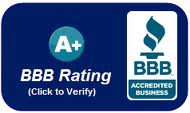
Moving into a new home should be an exciting milestone, but unexpected issues sometimes cloud that excitement. One major concern for new homeowners is discovering roof damage. If your roof needs immediate repairs after moving in, it’s important to act quickly to protect your home and belongings. This article will guide you through how to handle this urgent situation effectively.
Inspect the Damage Thoroughly
Once you notice a problem with your roof, the first step is to assess the extent of the damage. Look for visible signs such as missing shingles, leaks, sagging areas, or debris that could have caused harm. Walk through your attic or upper floors to check for water stains, damp spots, or mold, which are clear indicators of leaks.
While inspecting, avoid climbing onto the roof yourself unless it’s safe. If the damage appears extensive, contact a professional to inspect thoroughly. Swiftly acting will help you understand the scope of the issue and plan the necessary repairs.
Prioritize Temporary Solutions
If water enters your home due to roof damage, taking immediate action to minimize harm is crucial. Use tarps or waterproof materials to cover exposed areas temporarily. That can prevent further water intrusion and limit damage to your interiors. A bucket or container can catch dripping water for minor leaks until repairs are completed.
Temporary fixes won’t resolve the problem permanently but can buy you time to organize professional repairs.
Contact a Roofing Specialist Immediately
Call a roofing contractor once you’ve assessed the damage and applied a temporary solution. A licensed and experienced professional can evaluate the condition of your roof, recommend appropriate repairs, and provide an estimate. Choose a contractor with good reviews and experience in emergency roof repairs.
Discuss the urgency of the situation and ask about their availability. Many companies offer emergency services, ideal for immediate repairs after moving in.
Review Your Home Insurance Policy
Before committing costly repairs, check your homeowner’s insurance policy to determine if roof damage is covered. Some policies include coverage for storm-related damage or unforeseen issues. If the damage was caused by weather, falling trees, or other external factors, you might be eligible for financial assistance.
Contact your insurance provider promptly, provide evidence of the damage, and follow their claims process. Documentation, including photos of the roof and damage to your home, can strengthen your case.

Review your home insurance policy for the repairs needed after moving in.
Plan for Permanent Repairs
Temporary solutions will not hold up for long. Schedule permanent repairs once you’ve consulted with a contractor and your insurer. Roof repairs can vary from replacing a few shingles to fixing structural issues or replacing the entire roof. Trust your contractor’s expertise in determining the best course of action.
When selecting materials and techniques for the repairs, prioritize quality over speed. A properly repaired roof will protect your home for years to come.
Protect Your Belongings
While roof repairs are underway, it’s essential to safeguard your belongings from potential damage. Move furniture and valuables away from areas where water could leak through. Use waterproof coverings or relocate items to safer parts of the house.
This proactive step ensures that your belongings stay protected, even if the repairs take longer than anticipated.
Hire Moving Services
Moving into a new home with roof problems is already challenging, but it becomes even more complicated when the move is long-distance. Long-distance relocations involve added stress due to the distance, time, and logistics involved. You have to coordinate everything from packing and transportation to timing the arrival of your belongings.
In such a situation, skilled assistance is key to ensuring the process goes smoothly. Hiring professional movers can help streamline the process, offering essential services like packing and unpacking, loading and unloading, and specialized transport to ensure everything arrives safely and on time. These services save you time and effort and reduce the risk of damage to your belongings. With experts managing the move, you can focus on resolving the roof issues and other tasks at your new home, knowing that the relocation is in good hands.
Plan for Weather Conditions
Weather can complicate roof repairs. Monitor local forecasts to ensure the repair work happens under safe conditions. Rain or snow can exacerbate existing damage and delay repairs. Discuss weatherproofing measures or scheduling repairs for clear weather windows with your contractor.
Contractors may use special techniques or materials to work safely and efficiently if adverse weather is unavoidable.
Prepare for Additional Costs
Emergency repairs often come with unexpected costs. Be prepared to spend more on materials, labor, or expedited services. Creating a budget for repairs and being transparent with your contractor about costs can help you manage finances better.
If insurance doesn’t cover the repairs, consider exploring financing options offered by contractors or local lenders. Investing in a secure roof is worth the expense, as it protects your home’s structural integrity.

Emergency repairs often come with unexpected costs.
Schedule a Follow-Up Inspection
Once repairs are complete, schedule a follow-up inspection with the contractor or an independent inspector. That ensures the repairs were done correctly and identifies any remaining vulnerabilities. A follow-up inspection gives you peace of mind and helps maintain the longevity of your roof.
Regular maintenance checks can prevent future emergencies and keep your roof in top condition even after the initial repair.
Take Preventive Measures for the Future
After experiencing a roof emergency, it’s natural to want to prevent similar situations in the future. Routine maintenance, such as clearing debris from gutters, inspecting for damage after storms, and replacing aging materials, can keep your roof in excellent shape.
Investing in preventive measures reduces the risk of costly emergencies, providing long-term security for your home.
Conclusion: Dealing With Roof Repairs After Moving In
Roof repairs after moving in can be challenging, but acting quickly and efficiently can minimize its impact. You can navigate the situation successfully by assessing the damage, relying on skilled professionals, and protecting your belongings. With proper repairs and preventive measures, your new home will soon feel safe, secure, and ready for many years of enjoyment.
Article by: Janice Ruano

